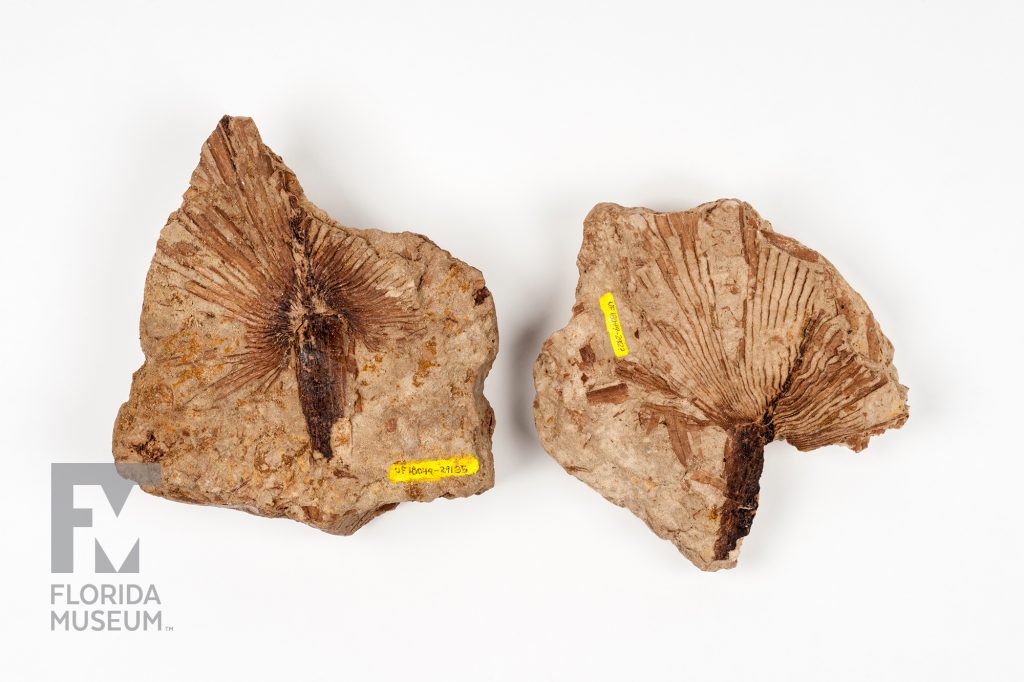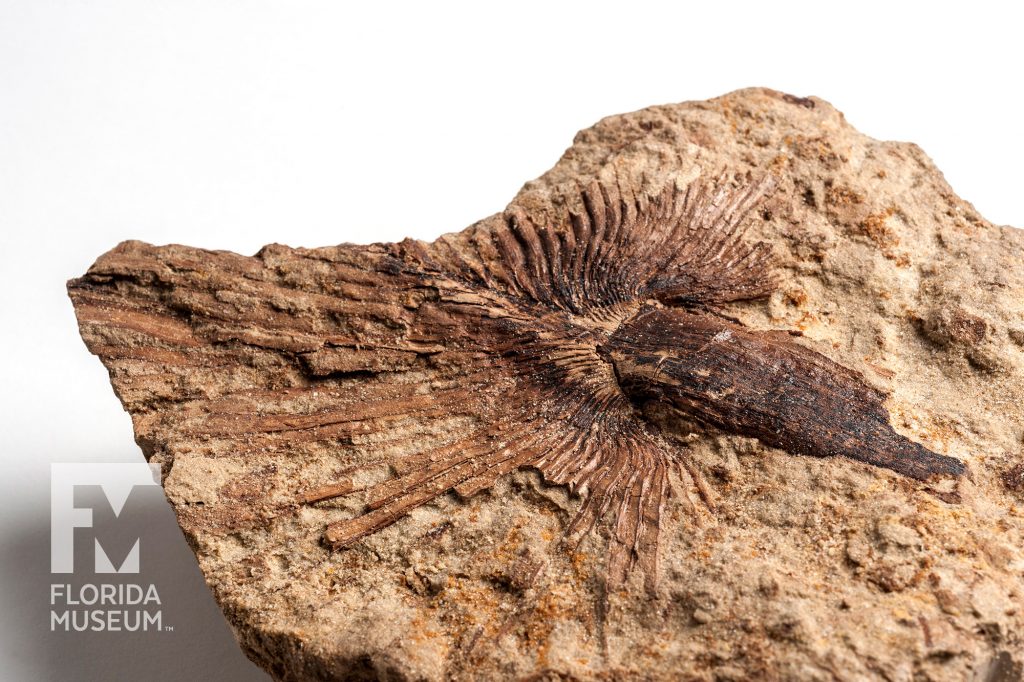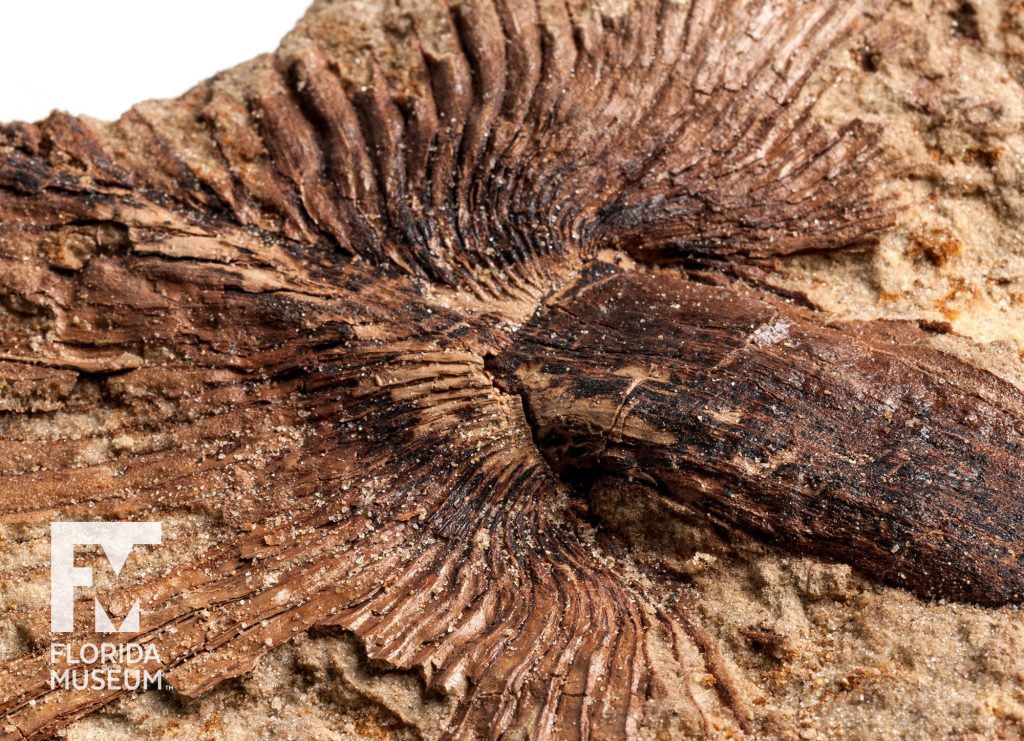Fossil plants from Alum Bluff represent a time when Florida’s climate was warmer and sea level was higher. In 1916 scientists identified 12 species of plant fossils from Alum Bluff – today Museum scientists have identified 22 more.
Summary
Fossil Palm (Sabalites apalachicolensis)
From Liberty Co., Florida
Lived ~18 million years ago (Miocene)
Fossil relative of State Tree (Sabal palmetto)
Collection
Story
This is a fossil palm leaf that we collected from the base of Alum Bluff, a 52-meter cliff along the Apalachicola River just north of Bristol, Florida. This is the most common leaf found at Alum Bluff, and people have been collecting fossil plants from this site since 1893.
The first description of these plants was from Edward Berry in 1916, who identified 12 species. Today, we have identified over 22 species. Vertebrates found in the same layer as the plants suggest a Middle Miocene age of around 15 to 18 million years.
This particular palm species is an important indicator for paleoclimate because modern relatives live in warm climates, but can tolerate a light freeze. These plants lived at a time of warmer temperatures and higher sea level than to day. The climate was subtropical to warm temperate, in a narrow band that stretched along the paleocoast from Florida to Massachusetts. This narrow band may have been influenced by ocean currents that are different from today and the climate may have fluctuated due to the presence of cooler temperature plants found at Alum Bluff.
So, looking at all the evidence, we conclude that the fossil plants from Alum Bluff lived in an elm-hickory-cabbage palm forest that occurred in a delta or intertidal shore environment.
Terry Lott
Biological Scientist*
Florida Museum of Natural History
Additional Information
- The Sabal Palmetto is Florida’s State Tree
Exhibit
On display Sept. 23, 2017-Jan. 7, 2018, Rare, Beautiful & Fascinating: 100 Years @FloridaMuseum celebrated the Museum’s rich history. Each Museum collection was asked to contribute its most interesting items and share the stories that make them special. Though the physical exhibit is closed, this companion website remains online, providing an opportunity to experience the Florida Museum’s most treasured specimens.
Exhibit Area: 100 Years of History
Theme: Sunshine State Symbols
 Want to see more? Explore more than 300 breathtaking color photos of plants, animals, fossils and cultural heritage materials from the Florida Museum of Natural History’s collections in the award-winning book All Things Beautiful available from the University Press of Florida.
Want to see more? Explore more than 300 breathtaking color photos of plants, animals, fossils and cultural heritage materials from the Florida Museum of Natural History’s collections in the award-winning book All Things Beautiful available from the University Press of Florida.
*This title was accurate at the time the exhibit was on display in 2017. Please visit the collection website to verify current staff and student information.


